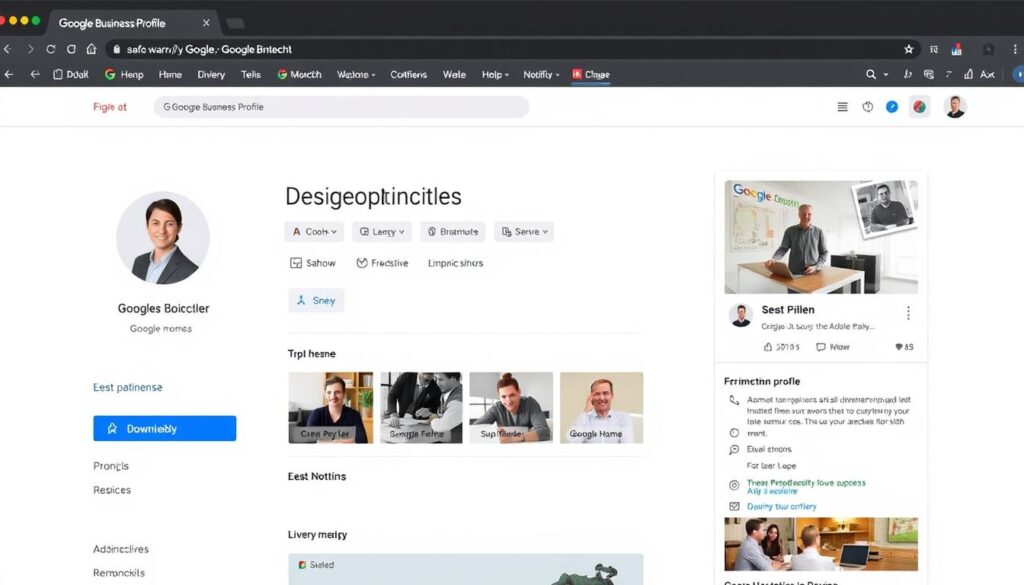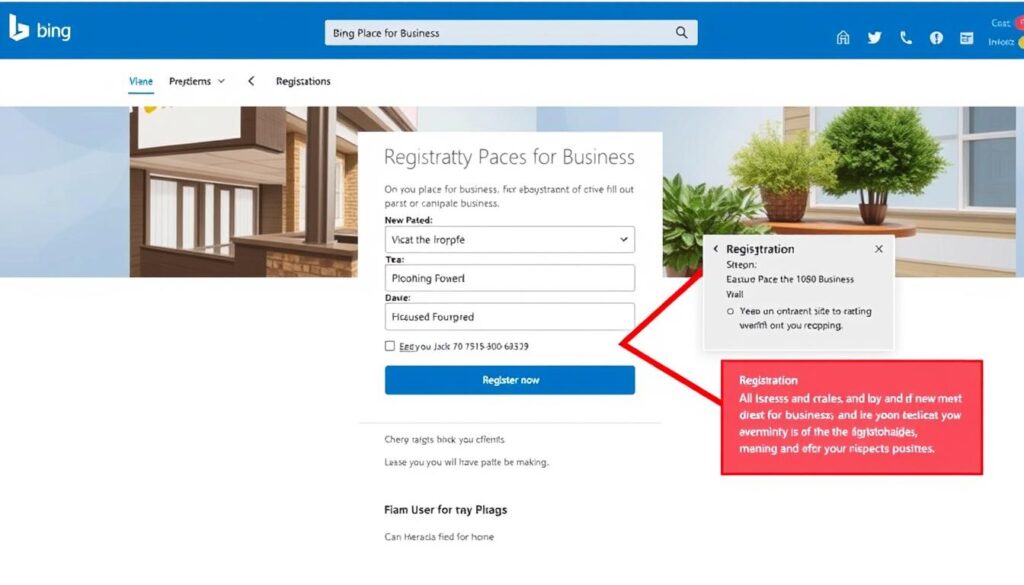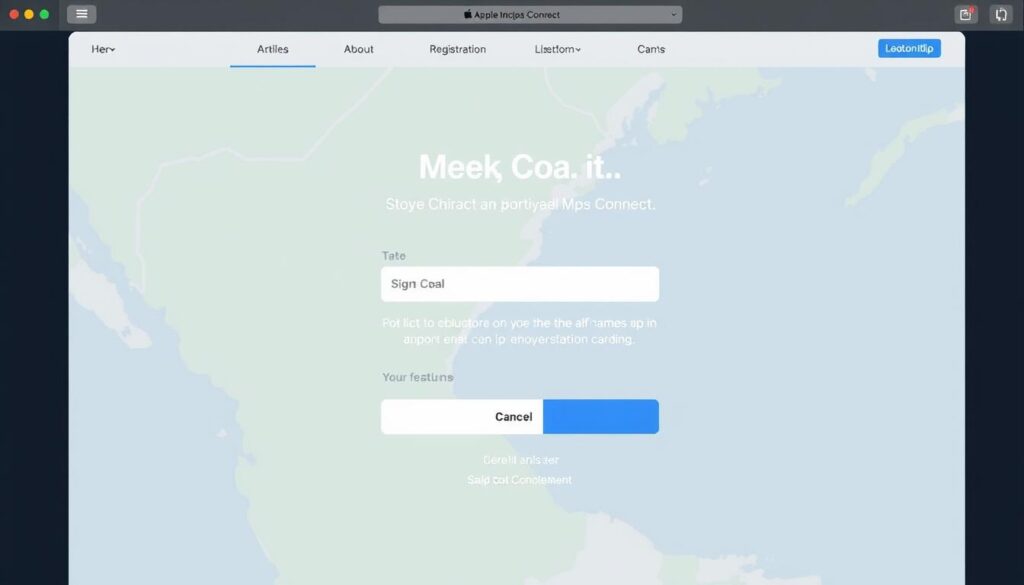The way people find information online is changing rapidly, with millions relying on voice assistants like Siri, Google Assistant, and Alexa for daily queries.
Understanding how to properly register your business can significantly improve your online visibility and help potential customers find you more easily.
This comprehensive guide will walk you through the process, debunking common myths about paid services and exploring essential platforms to focus on.
By the end of this guide, you’ll have the tools and knowledge needed to enhance your business’s presence without spending a dime on unnecessary services.
Key Takeaways
- Improve your online visibility with proper business registration
- Understand the role of voice assistants in daily queries
- Learn how to optimize your business information for better results
- Discover essential platforms to focus on for voice search
- Enhance your business’s presence without paid services
What is Voice Search and Why It Matters
Voice search technology is transforming how consumers find and interact with local businesses. This shift is driven by the growing popularity of voice assistants and the increasing reliance on voice queries for information.
The Growing Popularity of Voice Assistants
The use of voice assistants is on the rise, with many consumers turning to these tools for convenience and ease of use. As a result, businesses must now optimize their online presence to accommodate voice search queries.
- Voice search is changing how businesses approach online visibility, with a focus on natural language and conversational queries.
- Local businesses benefit significantly from voice search optimization due to the local intent behind many voice queries.
How Voice Search is Changing Online Visibility
Voice search is altering the landscape of online visibility, with businesses needing to adapt to new SEO strategies that prioritize voice queries. Unlike traditional text searches, voice assistants typically provide only one or a few top answers, making competition for these positions intense.
- Businesses need to ensure their profiles are accurate and complete to be considered for voice search results.
- Search engines prioritize businesses with consistent details across platforms and positive reviews.
By understanding these changes and adapting their strategies, businesses can improve their online visibility and reach more customers through voice search.
Understanding Voice Search Registration for Free
Many businesses are under the impression that they need to pay for voice search registration, but this isn’t necessarily true. The reality is that voice search doesn’t rely on special, exclusive directories that require paid registration. Instead, it pulls information from established business listing platforms and search engines.
Debunking the Myth of Paid Registration
The notion that businesses need to pay to be registered for voice search is a misconception. Voice search registration is essentially free, as it utilizes existing business directories. According to a recent study, “The rise of voice search has made it imperative for businesses to have a strong online presence.” This emphasizes the importance of understanding how voice search works and how businesses can optimize their listings.
- Voice search pulls information from major business listing platforms like Google Business Profile, Bing Places, and Apple Maps.
- These platforms aggregate business information from various sources, including direct submissions and user-generated content.
The Reality of Voice Search Directories
The primary directories for voice search are actually the major business listing platforms. Google Business Profile is crucial for Google Assistant, while Bing Places is important for Microsoft’s Cortana, and Apple Maps is key for Siri. The quality and consistency of business information across these platforms significantly impact visibility in voice search results.

Understanding this reality helps businesses focus on optimizing their presence on legitimate platforms rather than paying for dubious “voice search registration” services. By ensuring that their business information is accurate and consistent across these directories, businesses can improve their chances of appearing in voice search results.
“The key to success in voice search is not about paying for registration, but about ensuring your business information is accurate and consistent across major directories.”
How Voice Search Actually Works
Voice search has transformed the search landscape, and understanding its inner workings can provide businesses with a competitive edge. As voice assistants become increasingly popular, it’s crucial to grasp how voice search operates and how it can impact online visibility.
The User Query Process
When a user initiates a voice search, their query is processed through complex algorithms that interpret the spoken language. This process involves natural language processing (NLP) to understand the context and intent behind the query. The user’s query is then matched against vast databases to find the most relevant information.
How Voice Assistants Find and Present Results
Voice assistants like Google Assistant, Siri, and Alexa retrieve search results from their associated search engines and databases. For instance, Google Assistant primarily pulls from Google Search and Google Business Profile. The presentation of results varies by device; smart speakers provide audio-only responses, while smartphones may display a map or list alongside the spoken answer.
| Voice Assistant | Primary Data Sources | Result Presentation |
|---|---|---|
| Google Assistant | Google Search, Google Business Profile | Audio, Map/List on smartphones |
| Siri | Apple Maps, Yelp | Audio, Map/List on smartphones |
| Alexa | Bing, Alexa’s database | Audio |
As noted by a recent study, “The rise of voice search is redefining how businesses approach online visibility, with a focus on accurate and comprehensive information being paramount.”
“The future of search is voice, and businesses must adapt to this new paradigm to remain competitive.”
Essential Platforms for Voice Search Registration
In today’s digital landscape, ensuring your business is listed on major voice search directories is vital for reaching potential customers. With various voice assistants dominating the market, it’s crucial to understand which platforms are essential for your business’s online visibility.
Google Business Profile Setup

Setting up your Google Business Profile is a fundamental step in voice search registration. To do this, start by claiming your business listing on Google My Business. Ensure your business information is accurate and up-to-date, including your name, address, phone number, and hours of operation. Google’s voice search often pulls data from Google Maps and Google My Business, making it a critical platform for businesses to claim and optimize their listings.
Bing Places for Business Registration

Bing Places for Business is another key directory that can enhance your business’s visibility in voice search results, particularly for users of Microsoft’s voice assistant, Cortana. Registering on Bing Places involves claiming your business listing and verifying your business information. It’s essential to ensure consistency across all your business listings, including Bing, to improve your voice search rankings.
Apple Maps Connect for Siri Searches

For businesses targeting Apple device users, Apple Maps Connect is the go-to platform. By registering your business on Apple Maps, you can ensure that your business appears in Siri voice search results. Apple Maps listings should include comprehensive business information such as name, address, phone number, website, categories, hours, and photos. Additionally, since Siri often supplements Apple Maps data with information from Yelp, claiming and optimizing your Yelp business profile is also recommended.
By focusing on these essential platforms—Google Business Profile, Bing Places for Business, and Apple Maps Connect—businesses can significantly improve their visibility in voice search results across different devices and voice assistants.
Step-by-Step Guide to Voice Search Registration for Free
To improve your business’s discoverability through voice assistants, follow this step-by-step guide to free voice search registration. Voice search is becoming increasingly popular, and being listed in search results can significantly enhance your online visibility.
Creating and Optimizing Your Google Business Profile
Start by claiming and optimizing your Google Business Profile. This involves verifying your business location and providing accurate, up-to-date information. Ensure your business name, address, and phone number (NAP) are consistent across the web. Add relevant categories, high-quality photos, and detailed business hours to make your listing more informative and attractive to potential customers.
Key steps include:
- Verifying your business location
- Providing accurate NAP details
- Selecting relevant business categories
- Adding high-quality photos and business hours
Setting Up Your Bing Places Listing
Bing Places for Business is another crucial platform for voice search registration. To set up your listing, you’ll need to provide your business details, including NAP, categories, and descriptions. Bing may verify your business through an automated phone call or email. Ensure all information is accurate and consistent with your Google Business Profile.
Important details to include:
- Business name, address, and phone number
- Relevant categories and descriptions
- High-quality photos
Registering with Apple Maps Connect
For businesses targeting Siri users, registering with Apple Maps Connect is essential. Visit mapsconnect.apple.com and sign in with an Apple ID to begin the registration process. You can search for your business name to determine if a listing already exists; if it does, you’ll claim ownership, and if not, you’ll create a new listing.
| Platform | Key Features | Verification Process |
|---|---|---|
| Google Business Profile | NAP, categories, photos, hours | Postcard, phone call, or email |
| Bing Places for Business | NAP, categories, descriptions | Automated phone call or email |
| Apple Maps Connect | NAP, categories, website | Automated phone call with PIN |
By following these steps and ensuring consistency across these platforms, you can improve your business’s visibility in voice search results. Additionally, consider optimizing your Yelp business profile, as Siri often pulls supplementary information from Yelp to enhance Apple Maps listings.
Optimizing Your Business Information for Voice Search
To maximize your business’s visibility in voice search results, it’s crucial to optimize your business information across various platforms. This involves ensuring that your business details are accurate, comprehensive, and consistent across the web.
NAP Consistency Across Platforms
Maintaining consistency in your business’s Name, Address, and Phone Number (NAP) across all directories and platforms is vital. Inconsistent NAP can lead to confusion among voice assistants and potential customers, negatively impacting your voice search visibility.
Business Descriptions and Categories
Crafting a clear and concise business description and selecting the most relevant categories are essential steps. This information helps voice assistants understand your business and present it to users in relevant search results. Ensure your description includes key services and products you offer.
Hours, Photos, and Additional Details
Keeping your business hours updated is critical, especially since “open now” is a common qualifier in voice searches. High-quality photos and additional details such as parking information and payment methods can significantly enhance your business listing’s engagement and accuracy.
- Keep business hours updated across all platforms.
- Include high-quality photos showcasing your business.
- Add detailed information about your business services and amenities.
| Detail Type | Importance for Voice Search | Example |
|---|---|---|
| NAP Consistency | High | Ensuring Name, Address, and Phone Number are consistent. |
| Business Hours | High | Updating hours to reflect “open now” status. |
| Photos and Details | Medium | Including high-quality photos and business amenities. |

The Role of Customer Reviews in Voice Search Visibility
Businesses aiming to improve their voice search visibility must prioritize customer reviews as a key factor in their optimization strategy. Customer reviews not only enhance credibility but also play a significant role in how search engines rank businesses.
How Reviews Impact Voice Search Rankings
Reviews significantly influence voice search rankings by providing search engines with fresh, user-generated content that reflects a business’s quality and relevance. Positive reviews can boost a business’s visibility, making it more likely to be featured in voice search results.
The quantity and quality of reviews are crucial. A business with a high overall rating and a large number of reviews is generally considered more trustworthy by search engines, thereby improving its voice search ranking.
Strategies for Encouraging Positive Reviews
To encourage positive reviews, businesses should focus on delivering exceptional customer experiences. This can be achieved by training staff to provide outstanding service and by implementing a systematic review request process.
- Implementing a systematic review request process, such as sending follow-up emails or text messages with direct links to your Google Business Profile.
- Training your staff to verbally request reviews from satisfied customers.
- Creating physical reminders, like small cards with QR codes leading to your review profiles.
By adopting these strategies, businesses can increase their positive reviews, thereby enhancing their visibility in voice search results and attracting more customers.

Website Optimization for Voice Search Success
With the rise of voice assistants, adapting your website for voice search is essential for online success. Voice search has changed the way people interact with search engines, and businesses must optimize their online presence accordingly.
Mobile-Friendly Design Essentials
A mobile-friendly design is critical for voice search optimization. Most voice searches are conducted on mobile devices, so ensuring your website is responsive and provides a seamless user experience is vital. Key elements include fast loading speeds, easy navigation, and content that’s easily readable on smaller screens. A mobile-friendly website not only improves user experience but also enhances your search engine rankings.
Content Strategies for Voice Queries
To optimize your content for voice queries, focus on creating content that directly answers questions. Use natural, conversational language and incorporate long-tail keywords that reflect how people speak. Structuring content with question-based headings can also help. For instance, headings like “How do I find your store?” or “What are your business hours?” can improve your visibility in voice search results.
Some effective strategies include creating dedicated FAQ pages, using schema markup to provide context to search engines, and developing location-specific content to capture “near me” searches. By implementing these strategies, businesses can improve their voice search visibility and stay ahead in the competitive digital landscape.
| Optimization Strategy | Description | Benefit |
|---|---|---|
| Mobile-Friendly Design | Ensure your website is responsive and loads quickly on mobile devices. | Improved user experience and search engine rankings. |
| Conversational Content | Use natural language and long-tail keywords in your content. | Higher visibility in voice search results. |
| Schema Markup | Add structured data to help search engines understand your content. | Better context understanding by search engines. |
Warning Signs of Voice Search Registration Scams
As you navigate the world of voice search optimization, it’s crucial to be aware of potential scams targeting unsuspecting businesses. Legitimate voice search optimization primarily involves setting up free business listings on major platforms like Google, Bing, and Apple.
Common Tactics Used by Scammers
Scammers often use misleading tactics to convince businesses to pay for unnecessary “registration” services. Some common tactics include:
- Claiming to offer exclusive voice search registration services for a fee.
- Using high-pressure sales tactics to create a false sense of urgency.
- Promising unrealistic results or guaranteed rankings.
These tactics are designed to exploit businesses looking to improve their voice search visibility.
How to Protect Your Business
To avoid falling victim to these scams, it’s essential to be vigilant. Here are some tips to protect your business:
- Research any company offering voice search services thoroughly, checking for online reviews and ratings.
- Ask detailed questions about the services they provide and the platforms they work with.
- Request a detailed contract outlining deliverables and measurable results before agreeing to any services.
By being cautious and doing your due diligence, you can protect your business from voice search registration scams and focus on legitimate local SEO strategies.
Measuring Your Voice Search Performance
Measuring the impact of voice search on your business requires a strategic approach. To understand how voice search is influencing your online visibility and customer interactions, you need to track the right metrics.
Tools for Tracking Voice Search Visibility
Several tools can help you monitor your voice search performance. Google Business Profile, Bing Places, and other local listing platforms provide insights into how customers are finding and interacting with your business. Utilize these tools to gather data on search queries, customer actions, and overall visibility.
Key Metrics to Monitor
To effectively measure your voice search performance, focus on the following key metrics:
- Track changes in local search ranking positions for key voice search phrases.
- Monitor review growth rate across platforms.
- Measure direction requests from Google Business Profile.
| Metric | Description | Importance |
|---|---|---|
| Local Search Rankings | Track changes in ranking positions for voice search phrases. | High |
| Review Growth Rate | Monitor the increase in reviews across platforms. | High |
| Direction Requests | Measure requests for directions from Google Business Profile. | Medium |
Conclusion
As we conclude our guide on voice search registration, it’s clear that optimizing your online presence is crucial for local businesses. Voice search registration is completely free and primarily involves optimizing your business listings on key platforms such as Google Business Profile, Bing Places, and Apple Maps Connect.
To succeed in voice search, consistency across platforms is vital. Ensuring that your business information is identical across these platforms helps search engines confidently present your business in search results. Moreover, customer reviews play a pivotal role in voice search visibility, making review generation and management an essential part of your voice search strategy.
A mobile-friendly website design and content optimized for conversational queries significantly improve your chances of appearing in voice search results. It’s also important to be vigilant about potential scams, as legitimate voice search optimization doesn’t require paying for special “registration” services or exclusive directories.
Voice search is becoming increasingly important for local businesses as more consumers adopt voice assistants and smart speakers for their everyday information needs. By implementing the strategies outlined in this guide, you can improve your business’s visibility in voice search results without spending money on unnecessary services.
Remember that voice search optimization is an ongoing process rather than a one-time task. It requires regular updates and monitoring to maintain and improve your position. The effort invested in voice search optimization also benefits your traditional search visibility, creating a stronger overall online presence for your business.
Start implementing these free voice search registration steps today to ensure your business doesn’t miss out on the growing number of customers using voice search to find local products and services. By doing so, you’ll be well on your way to enhancing your business’s online presence and reaching more customers through this increasingly popular search method.
